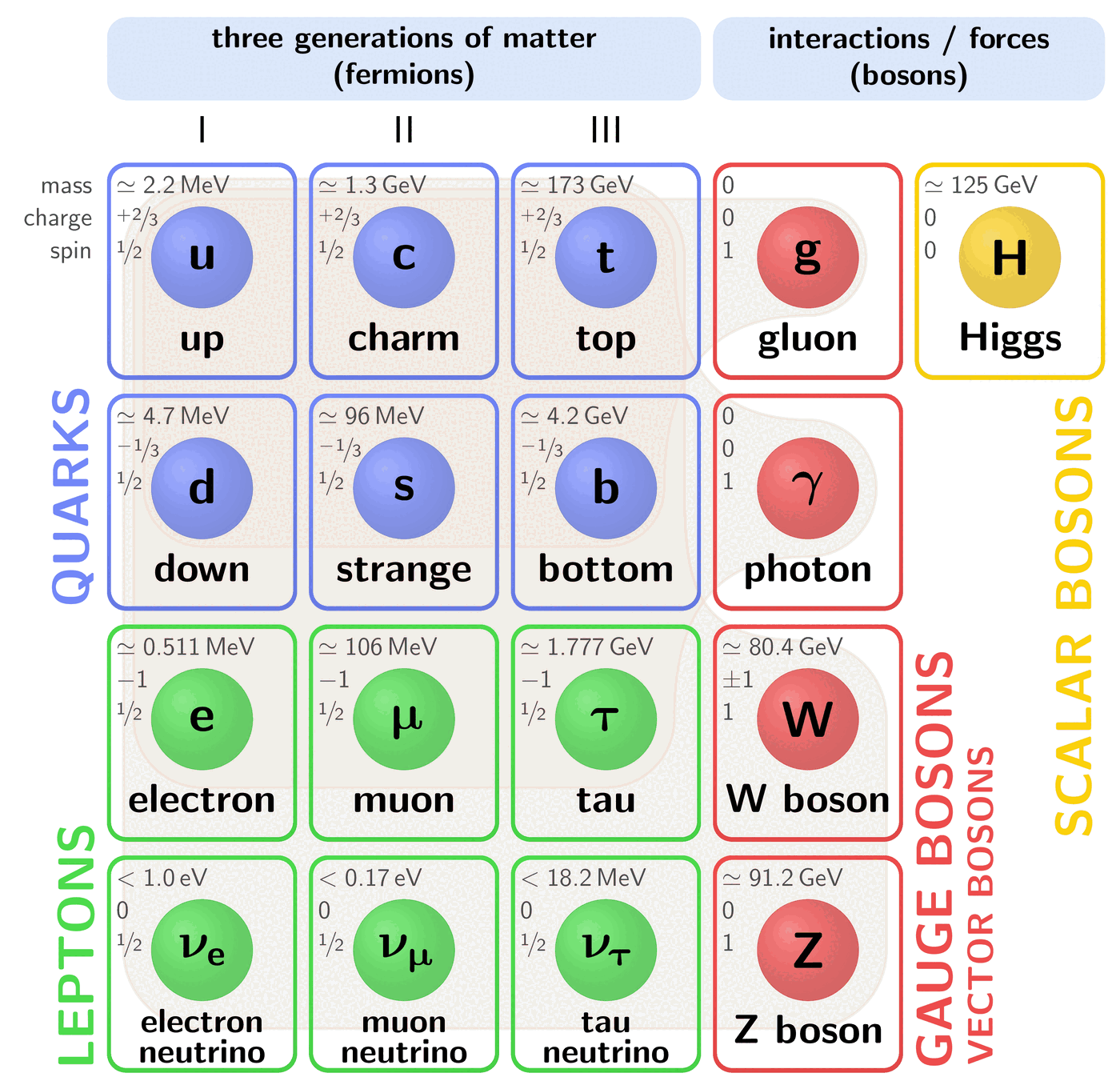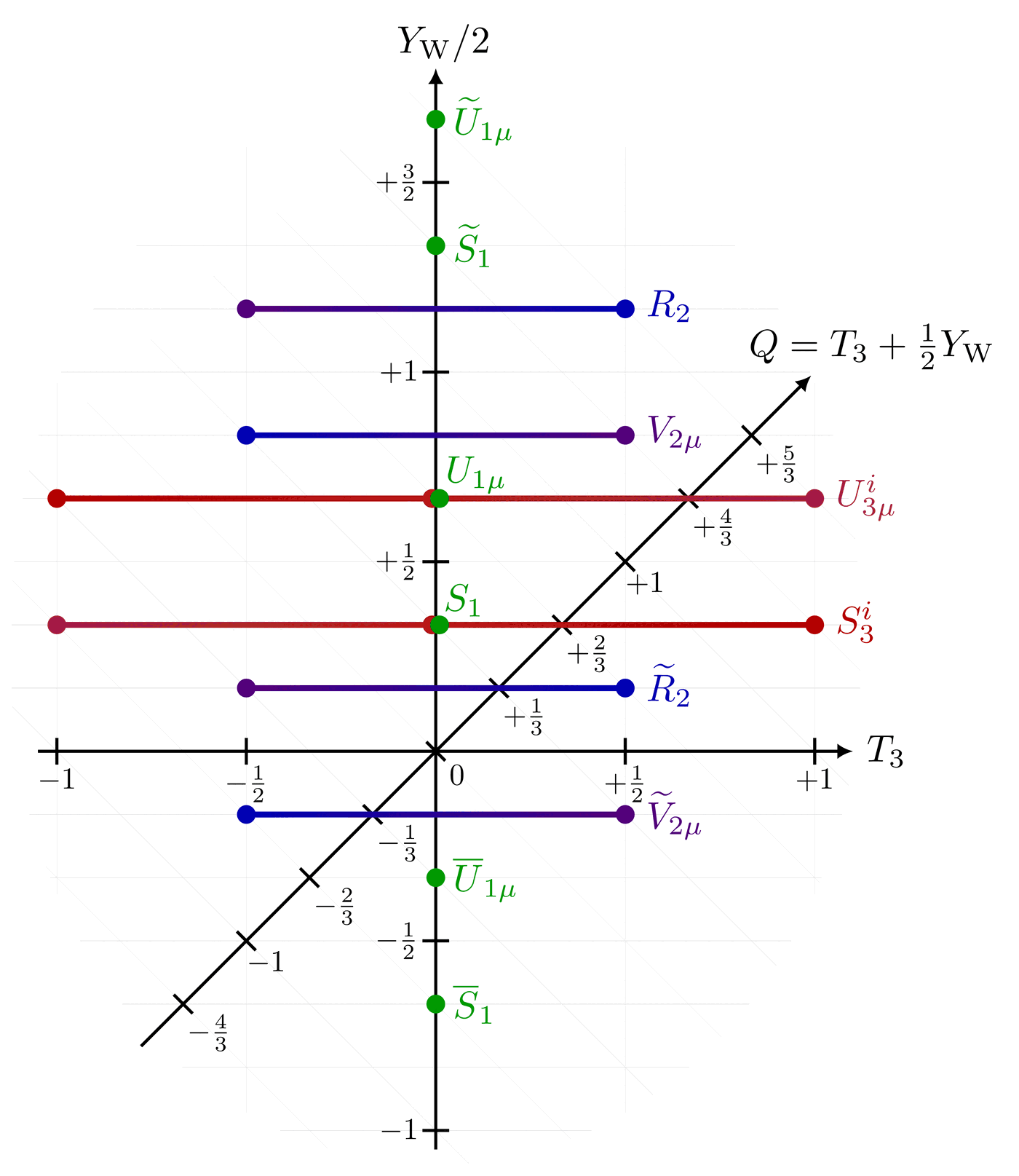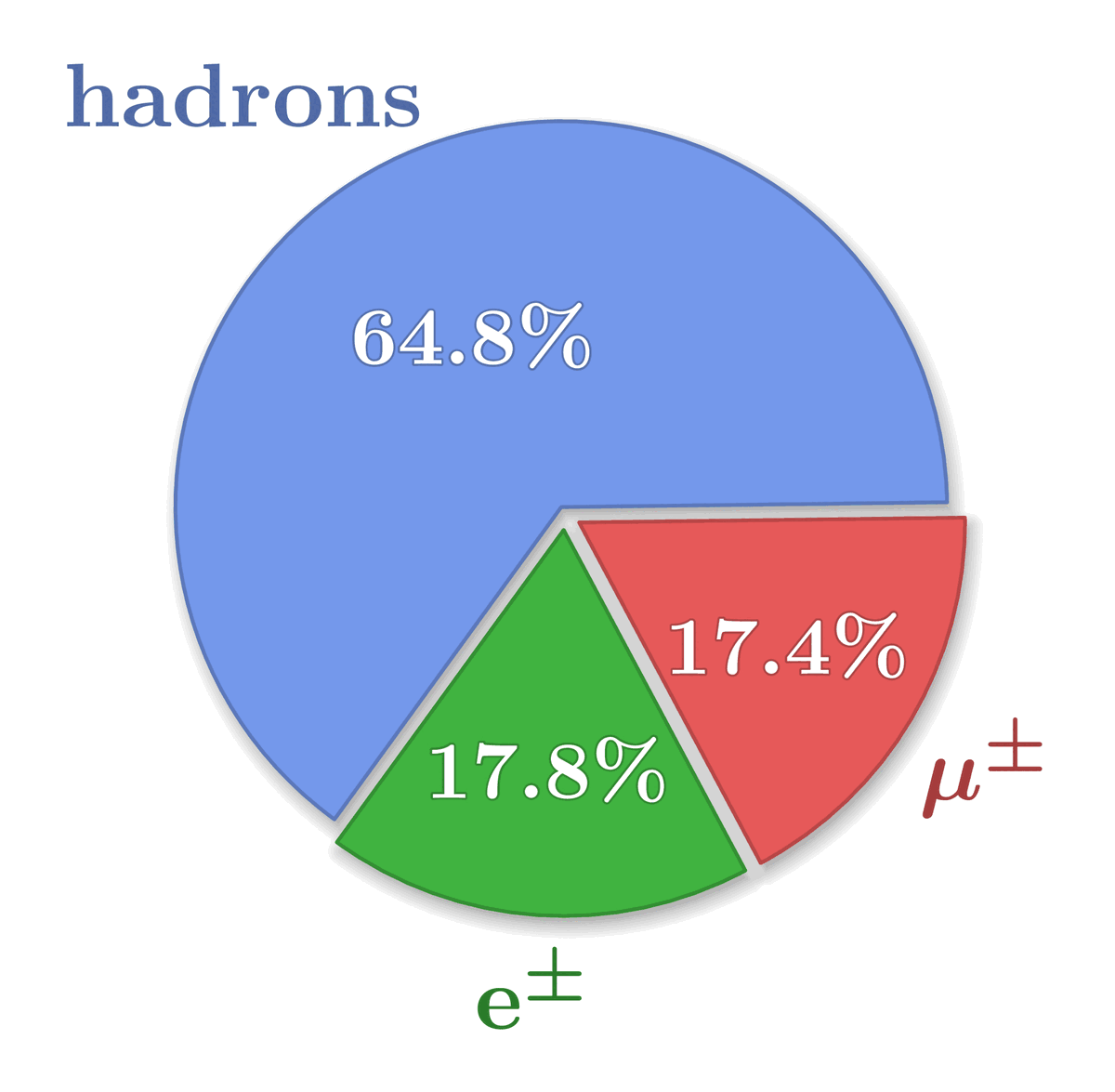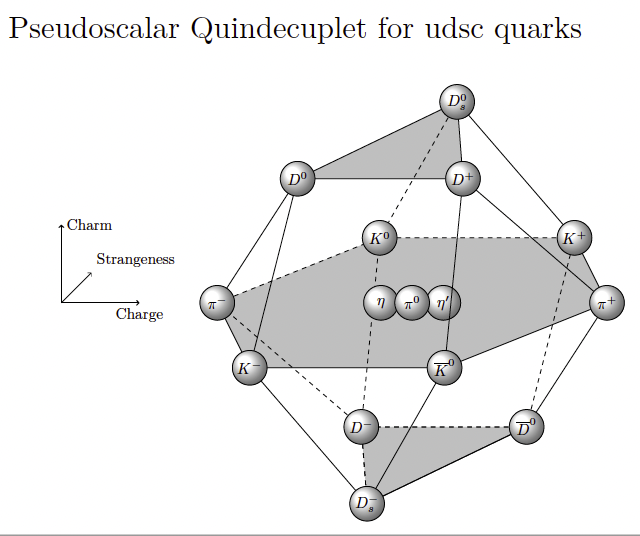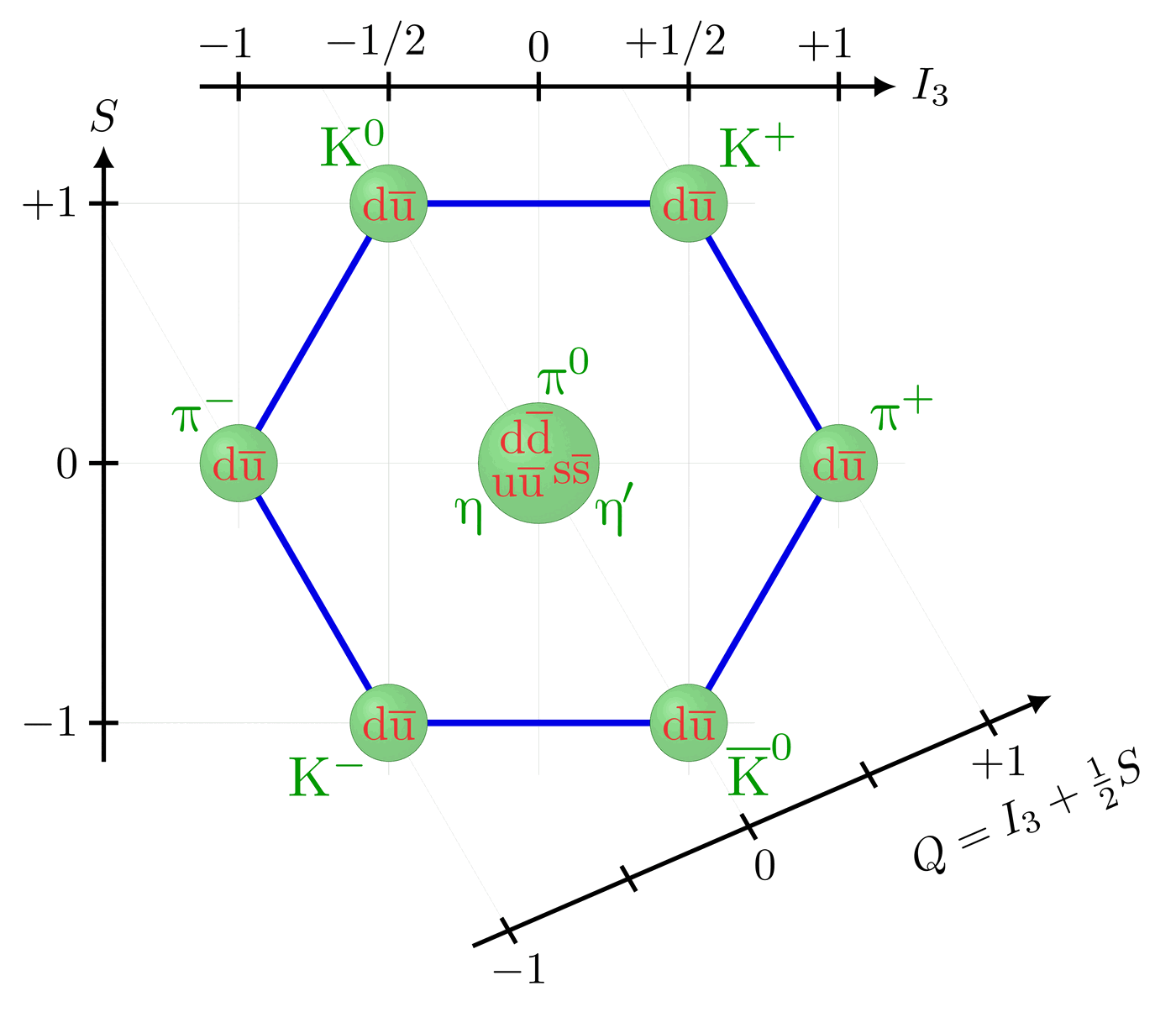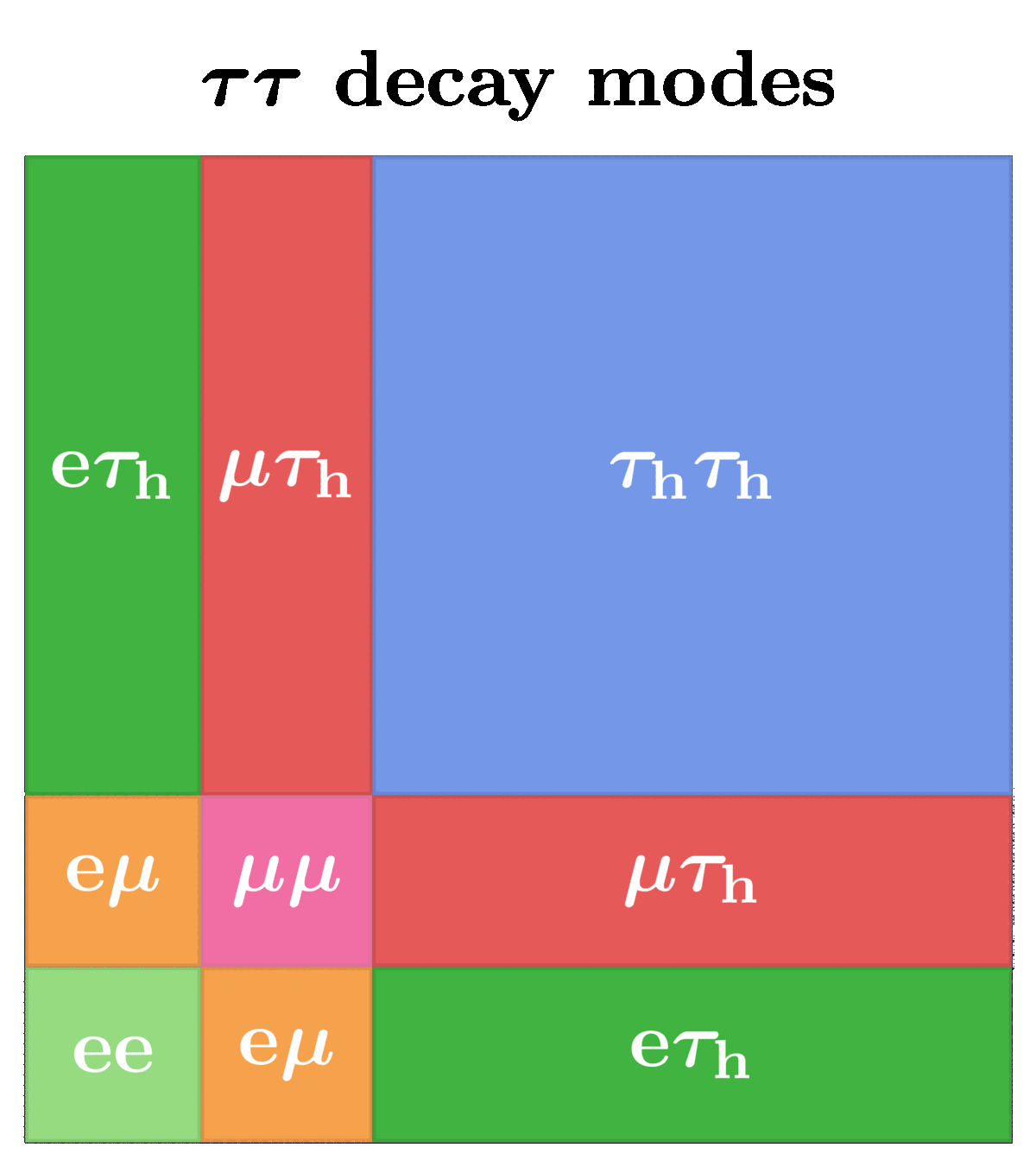Summary of the elementary Standard Model particles.
Inspired by Quanta Magazine and Symmetry Magazine.
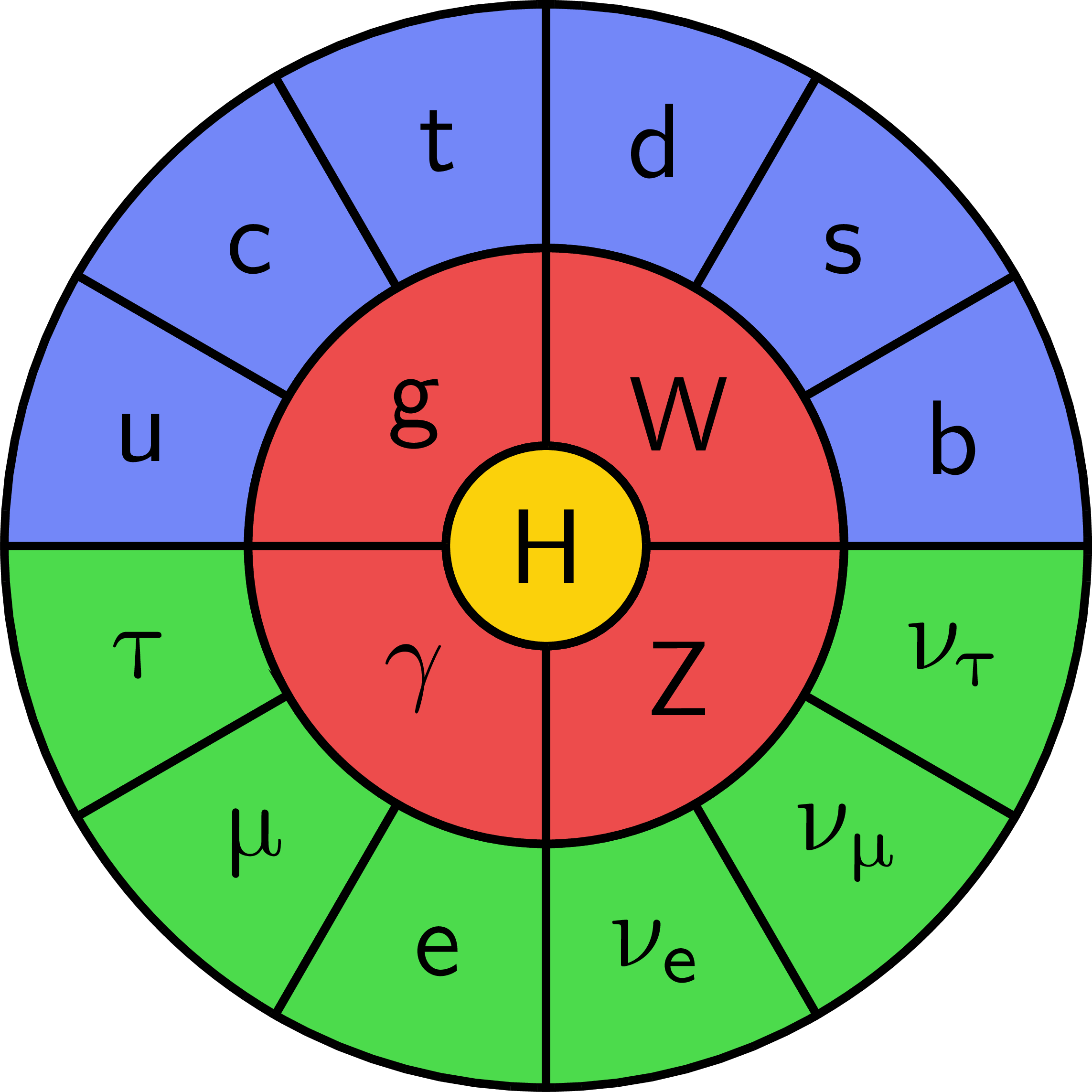
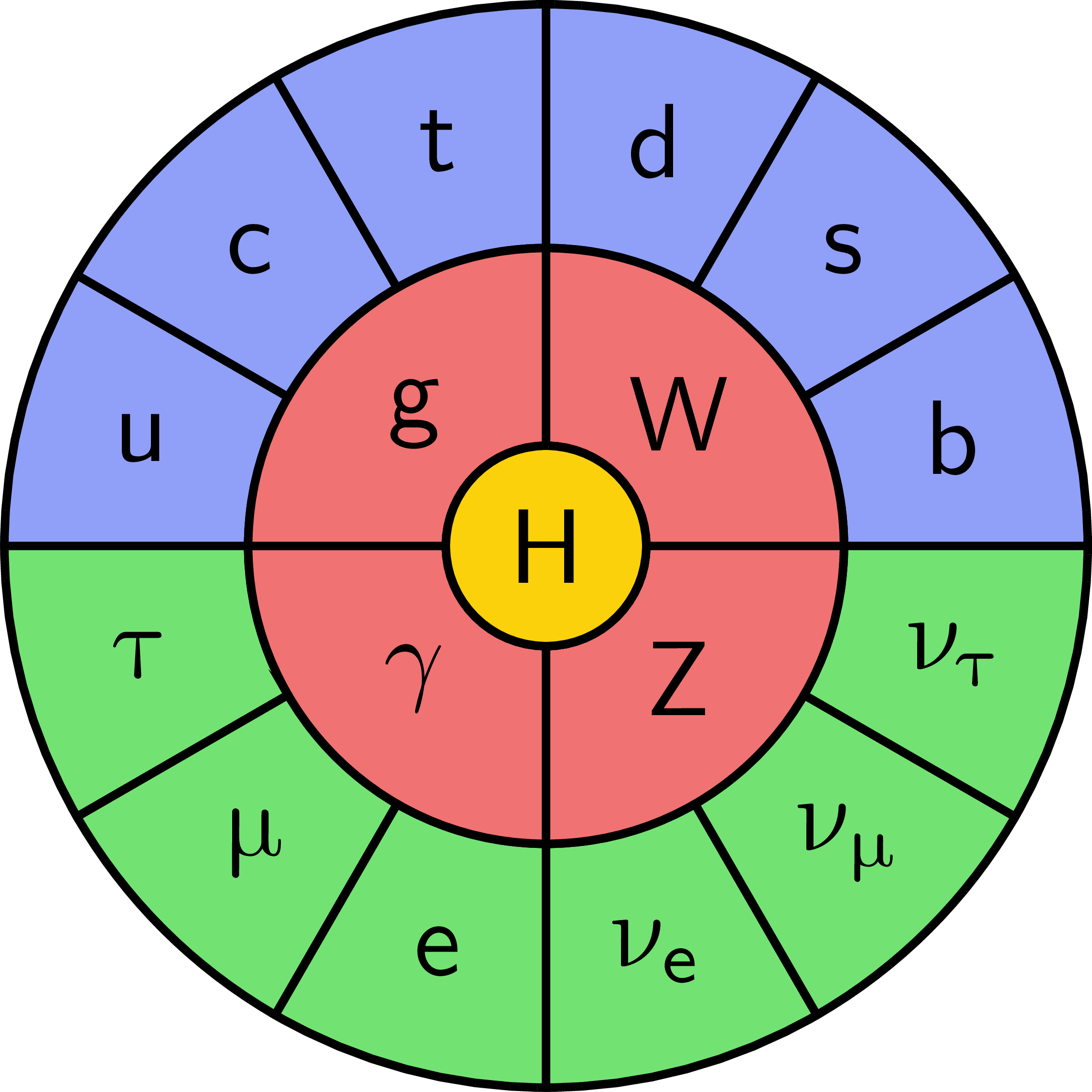
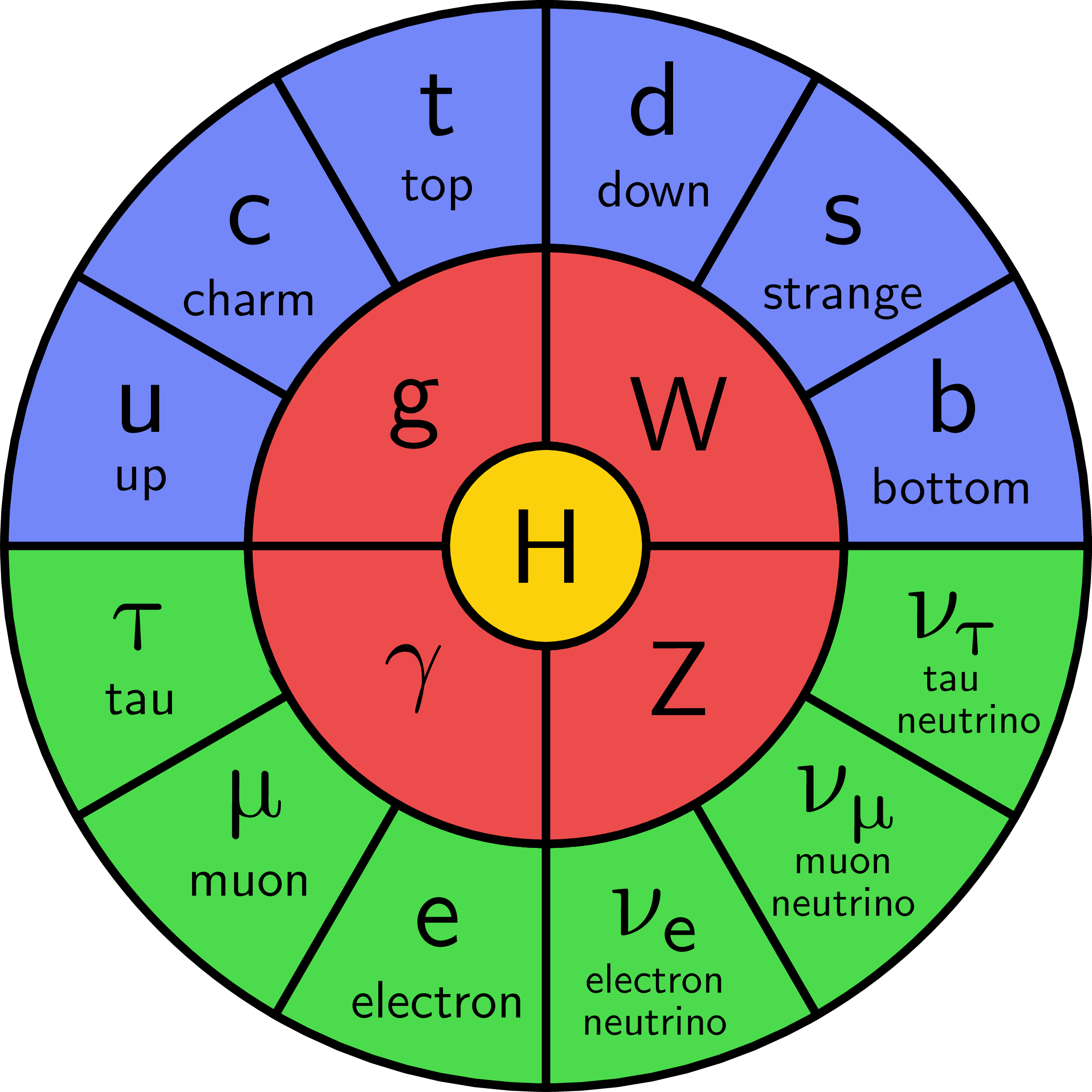
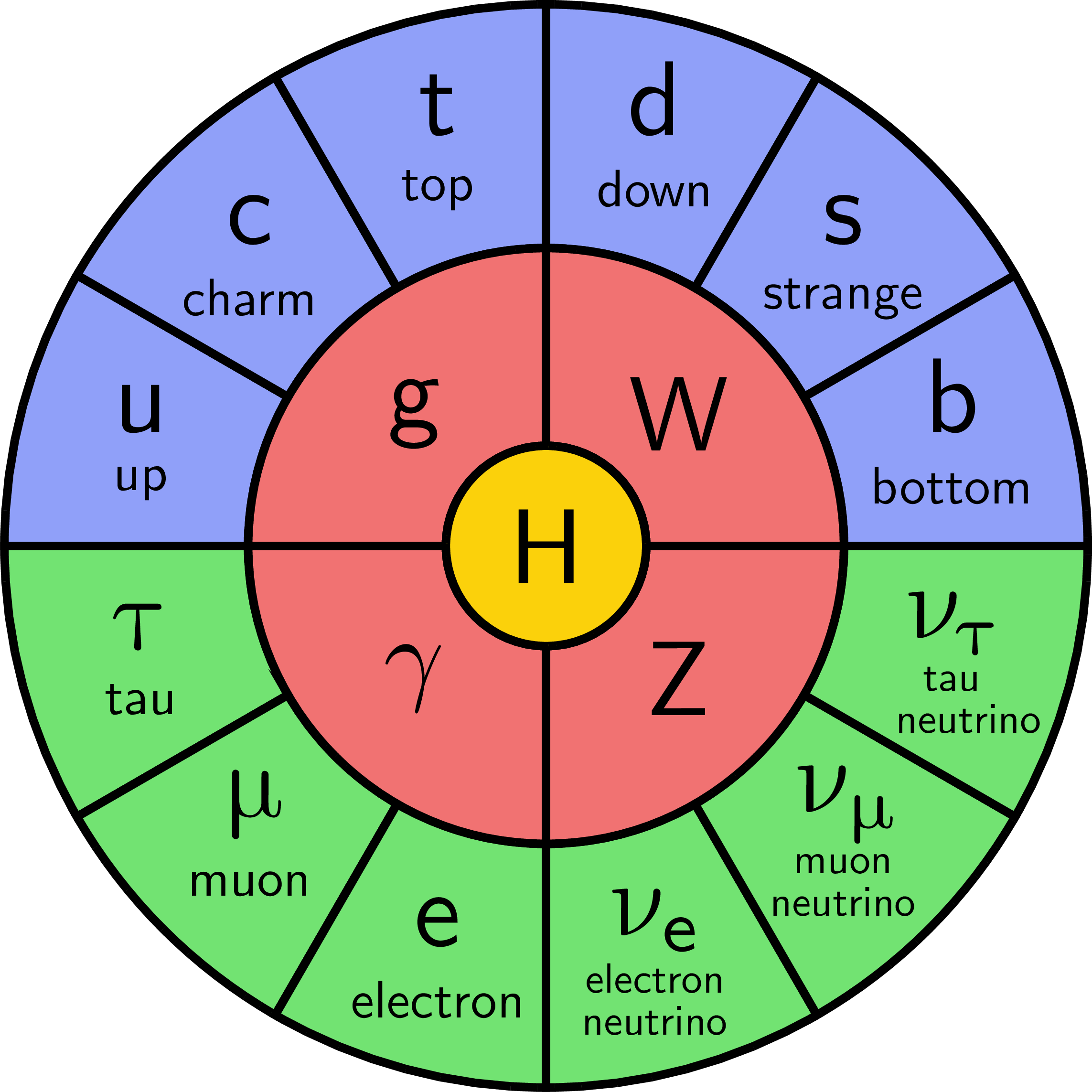
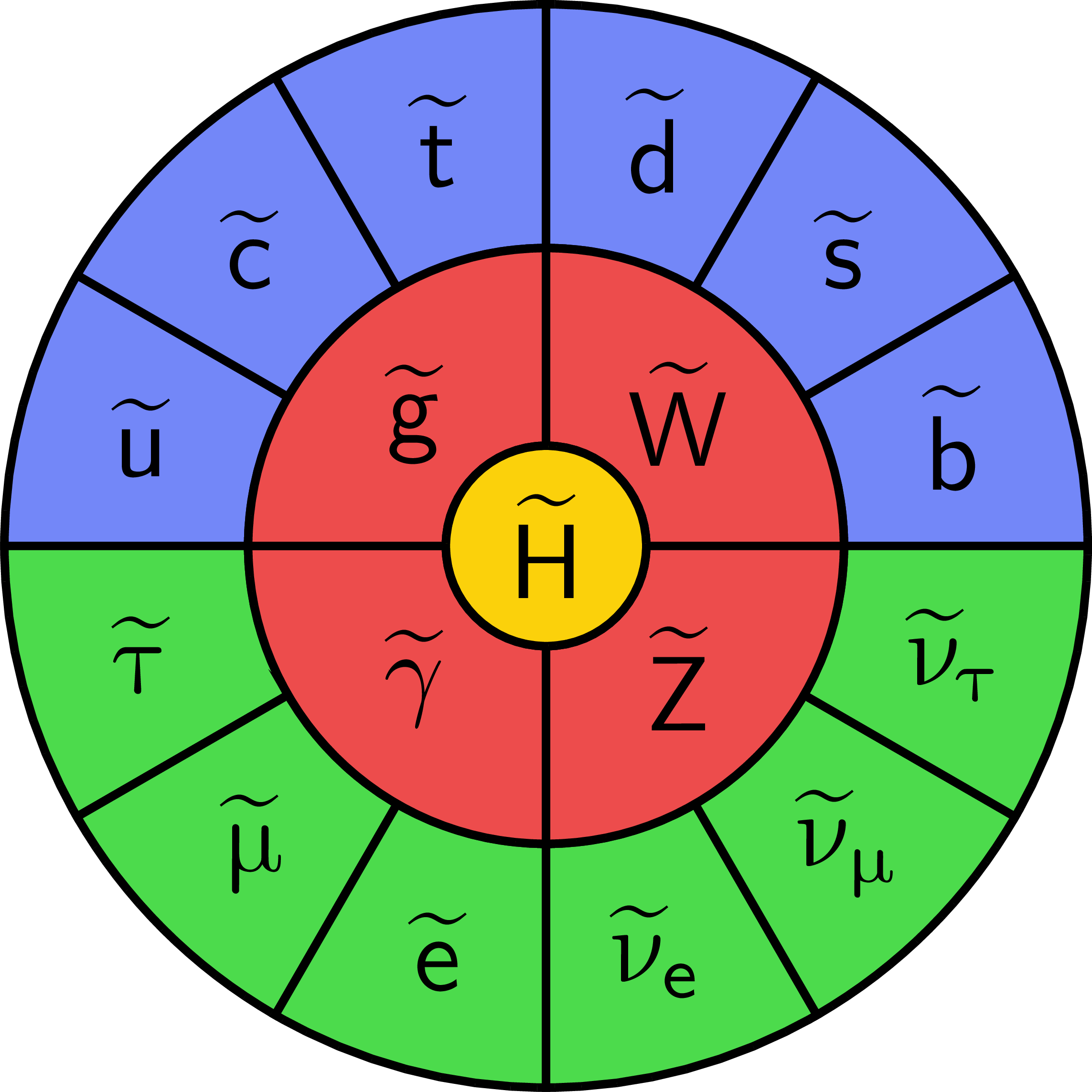
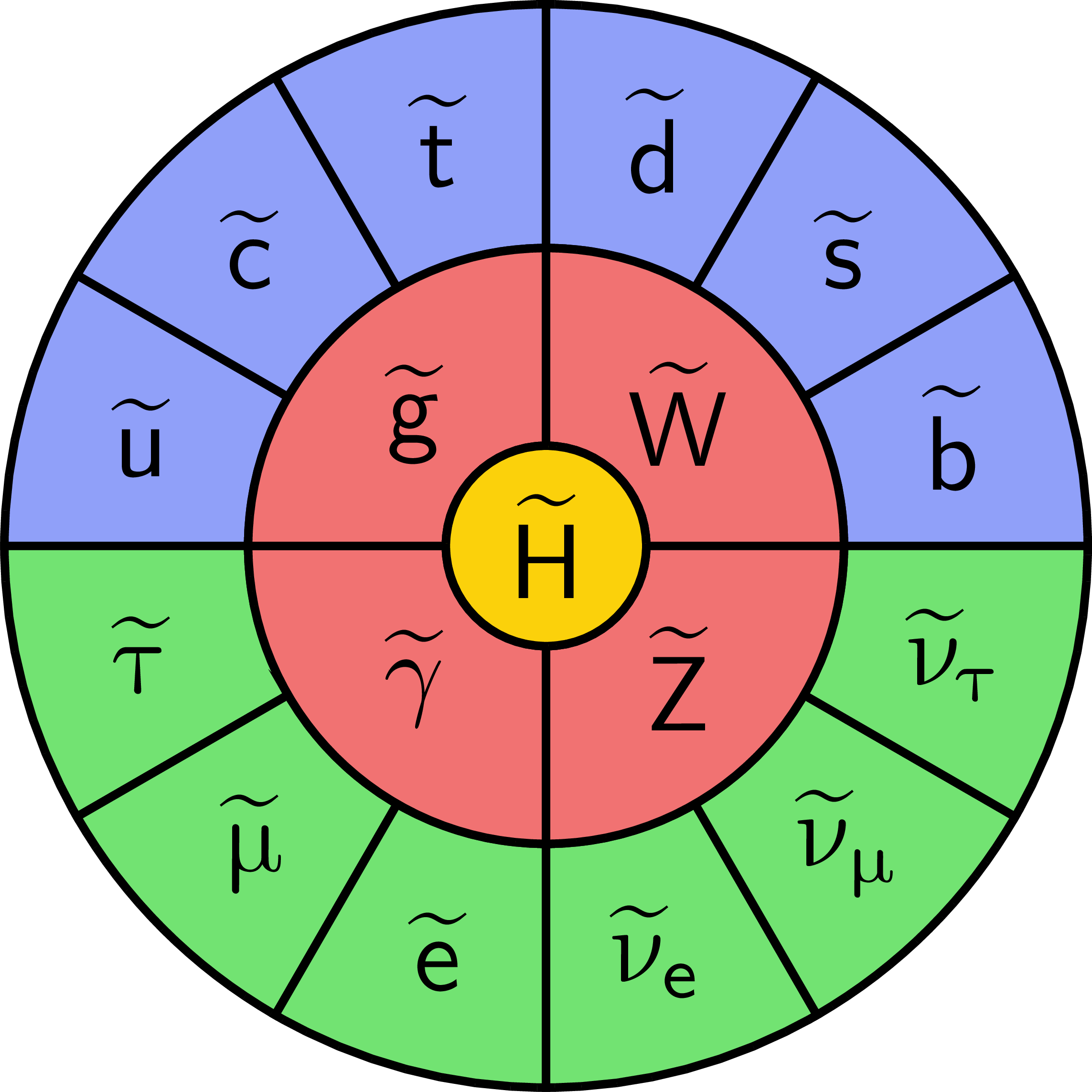
Edit and compile if you like:
% Author: Izaak Neutelings (July 2023)% Description:% Standard Model (SM) of Particles Physics table (round)% Inspired by:% https://www.symmetrymagazine.org/article/july-2015/standard-model?language_content_entity=und% https://www.quantamagazine.org/a-new-map-of-the-standard-model-of-particle-physics-20201022/% https://www.energy.gov/science/doe-explainsthe-standard-model-particle-physics\documentclass[border=3pt,tikz]{standalone}\usepackage{amsmath} % for \text\usepackage{xfrac} % for \myfrac\usepackage{bm} % for \bm\usetikzlibrary{calc}\usetikzlibrary{positioning}\tikzset{>=latex} % for LaTeX arrow head% FONT\usepackage{sansmath} % for \sansmath\renewcommand{\familydefault}{\sfdefault} % set sans serif font globally\sansmath % set sans serif font globally% UNSLANT GREEK LETTERS for particle symbols% https://tex.stackexchange.com/questions/145926/upright-greek-font-fitting-to-computer-modern% https://tex.stackexchange.com/questions/236915/adjust-custom-made-upright-greek-letters-when-used-in-subscripts\usepackage{scalerel}\newsavebox{\foobox}\newcommand{\slantbox}[2][0]{\mbox{%\sbox{\foobox}{#2}%\hskip\wd\foobox\pdfsave\pdfsetmatrix{1 0 #1 1}%\llap{\usebox{\foobox}}%\pdfrestore}}\newcommand\unslant[2][-.25]{%%\mkern1.2mu%\ThisStyle{\slantbox[#1]{$\SavedStyle#2$}}%\mkern-2.2mu%}\newcommand\PGm{\unslant\mu} % muon\newcommand\PGt{\unslant\tau} % tau\newcommand\PGn[1]{\unslant\nu_{#1}\mkern-1.5mu} % neutrino
Click to download: SM_particles_round.tex • SM_particles_round.pdf
Open in Overleaf: SM_particles_round.tex


